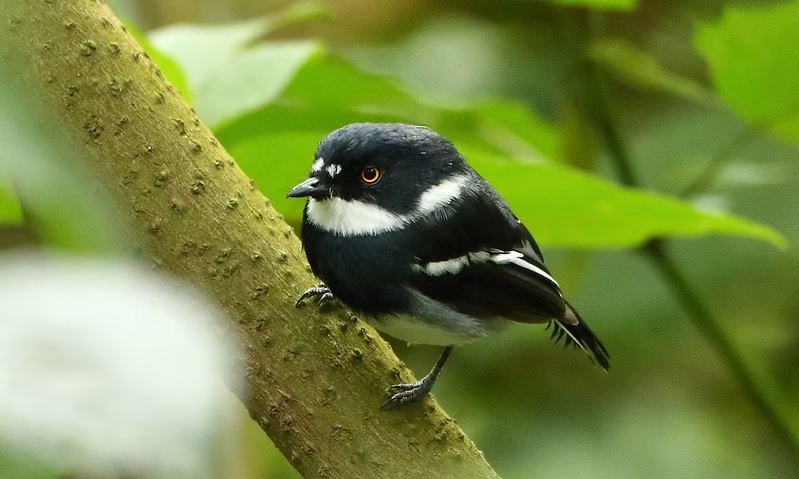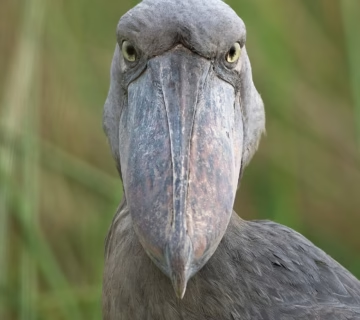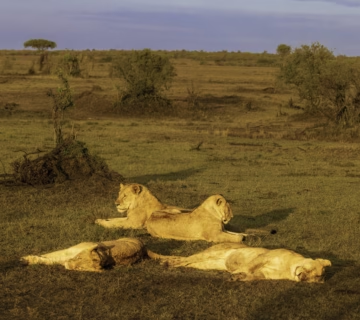Bird watching in Ruhija sector
Ruhija sector, one of the sectors in the eastern section of Bwindi impenetrable national park in Rubanda district, is a good place to go bird watching. One of Uganda’s top birding destinations, the Ruhija sector is home to over 400 known bird species, including migratory, forest, and Albertine Rift endemics. The Ruhija sector has a number of places to go bird watching, such as Ruhija Hill, Mubwindi Swamp, and Bamboo Trail.
Helmeted guinea fowl, African pygmy kingfisher, ross’s turaco, double-toothed barbet, African shrike flycatcher, red chested flufftail, cinnamon bee-eater, dwarf honey guide, Carruthers cisticola, African green broadbill, common buzzard, grey throated barbet, African paradise flycatcher, and more are among the various bird species you will be able to spot while bird watching in Ruhija sector with the assistance of an experienced park guide.
Doherty’s bush shrike, purple-breasted sunbird, mountain masked apalis, blue-headed sunbird, snowy-crowned robin chat, grey-crowned crane, MacKinnon’s shrike, and brown-capped weaver Kivu ground thrush, strip-breasted tit, Rwenzori batis, and archers’ robin talk Strange weaver, huge blue turaco, Rwenzori turaco, For example, the regal sunbird, dusky turtle dove, little sparrow hawk, black bee-eater, dusky twin spot, black crake, red-faced woodland warbler, western green tinker bird, barred long-tailed cuckoo, Klaas’s cuckoo, white throated greenbul, crested guinea fowl, palm nut vulture, and African wood-owl.
The ideal time of year to visit Ruhija Sector for a bird viewing safari
Although it is possible to see birds in the Ruhija sector throughout the year, the ideal time to do so is from March to May and October to November, when it is raining. The birds have a plenty of food during the rainy season, and it’s also bird breeding season, so you may see migratory and colorful bird species.
The dry season, which runs from June to September and December to February, is another time to go bird watching in the Ruhija area. Because there is less rainfall during this time, the birding paths will be dry and easier to navigate.
Accommodations for your Ruhija area bird viewing safari
Ruhija Gorilla Mist Camp, Cuckooland Tented Lodge, Ruhija Gorilla Friends Resort and Campsite, Ruhija Community Rest Camp, Bakiga Lodge, Ruhija Gorilla Safari Lodge, Trekkers Tavern Cottages, Broadbill Forest Camp, and Agandi Uganda Eco Lodge are just a few of the affordable, midrange, and luxurious lodging options available in the Ruhija sector for your bird watching safari.
Directions to the Ruhija Sector
The lodge or park headquarters can be reached by air through scheduled or charter flights with Bar Aviation or Aero Link Uganda from Entebbe International Airport or Kajjansi Airfield to Kihihi Airstrip. It is situated in the eastern portion of Bwindi Impenetrable National Park.
Road transportation is another way to get to the Ruhija sector. From Kampala, you will travel via Masaka, Mbarara, Kabale, and finally to the park headquarters, which takes around eight to nine hours in a 4WD safari vehicle.
Additional operations in the Ruhija sector
In addition to bird watching, Ruhija Sector offers other fascinating activities. For instance, gorilla trekking allows you to spend an hour with endangered mountain gorillas in their natural habitat; Batwa cultural experience allows you to interact with Batwa/pygmies who once inhabited Bwindi forest before it was gazetted into a national park; mountain biking allows you to explore nearby villages on a bicycle; community tours allow you to interact with locals in nearby villages; and nature walks allow you to get up close and personal with various primate, animal, plant, and tree species, among others.
Things to bring on your Ruhija sector bird viewing safari
Long-sleeved shirts and trousers to keep you warm in the morning, hiking boots to keep your feet dry, a field guidebook, a camera, and extra batteries to take pictures of various bird species, binoculars, energy snacks, and bottled water, a hat, garden gloves, a waterproof rain jacket to protect you from the rain, and a waterproof backpack to hold your birding supplies like a field guidebook, camera, and energy snacks are just a few of the things you’ll need to bring on a bird watching safari.


